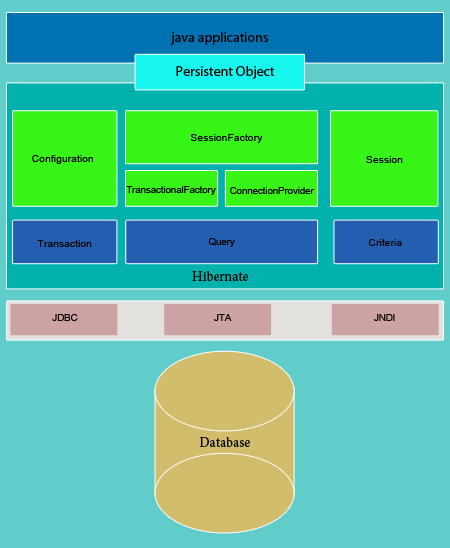Hibernate framework simplifies the development of java application to interact with the database. Hibernate is an open source, lightweight, ORM (Object Relational Mapping) tool.
Benefits of Hibernate
1) Opensource and Lightweight: Hibernate framework is opensource under the LGPL license and lightweight.
2) Fast performance: The performance of hibernate framework is fast because cache is internally used in hibernate framework. There are two types of cache in hibernate framework first level cache and second level cache. First level cache is enabled bydefault.
3) Database Independent query: HQL (Hibernate Query Language) is the object-oriented version of SQL. It generates the database independent queries. So you don't need to write database specific queries. Before Hibernate, If database is changed for the project, we need to change the SQL query as well that leads to the maintenance problem.
4) Automatic table creation: Hibernate framework provides the facility to create the tables of the database automatically. So there is no need to create tables in the database manually.
5) Simplifies complex join: To fetch data form multiple tables is easy in hibernate framework.
6) Provides query statistics and database status: Hibernate supports Query cache and provide statistics about query and database status.
Hibernate Architecture

- SessionFactory (org.hibernate.SessionFactory): SessionFactory is an immutable thread-safe cache of compiled mappings for a single database. We can get instance of org.hibernate.Session using SessionFactory.
- Session (org.hibernate.Session): Session is a single-threaded, short-lived object representing a conversation between the application and the persistent store. It wraps JDBC java.sql.Connectionand works as a factory for org.hibernate.Transaction.
- Persistent objects: Persistent objects are short-lived, single threaded objects that contains persistent state and business function. These can be ordinary JavaBeans/POJOs. They are associated with exactly one org.hibernate.Session.
- Transient objects: Transient objects are persistent classes instances that are not currently associated with a org.hibernate.Session. They may have been instantiated by the application and not yet persisted, or they may have been instantiated by a closed org.hibernate.Session.
- Transaction (org.hibernate.Transaction): Transaction is a single-threaded, short-lived object used by the application to specify atomic units of work. It abstracts the application from the underlying JDBC or JTA transaction. A org.hibernate.Session might span multiple org.hibernate.Transaction in some cases.
- ConnectionProvider (org.hibernate.connection.ConnectionProvider): ConnectionProvider is a factory for JDBC connections. It provides abstraction between the application and underlying javax.sql.DataSource or java.sql.DriverManager. It is not exposed to application, but it can be extended by the developer.
Go through this video:
